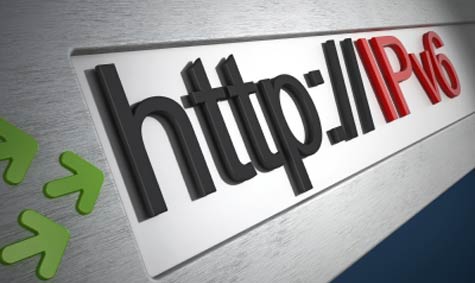Not as much attention is being paid to IPv6 as it has in the past. If it means that implementation of the expanded addressing scheme is proceeding, that’s a good thing. It’s a bad thing if it suggests that folks are more or less forgetting about it. IPv6, after all, is key to allowing the Internet to support the billions of devices that are emerging due to the explosion of mobility, the Internet of Things (IoT) and other address-demanding advances.
A good sign is that people are still discussing IPv6 on the operational level. For instance, Network Computing offers a story on the ins-and-outs of testing networks that are using IPv6. The bottom line is that pitfalls to testing an active IPv6 network involve both steps that are general to all networks and steps that are unique to the new scheme. For instance, something as simple as transcribing the 128-bit network addresses correctly can be a challenge.
Another sign of progress is that Docker 1.5 will include IPv6 support, eWeek explains. Docker is an open source project that enables application virtualization in containers. The article furthers the idea that the recognition of IPv6 must be accommodated and supported.
IPv6 has to be adopted for the IoT to gain traction. It is not certain how this will shake out, though. Forbes contributor Dave Lewis thinks that the deployment of so many devices, many of which are technically rudimentary, presents a challenge. IPv4 addresses are running out, but many of the low-cost embedded-type devices that would be part of the IoT only support IPv4. Will the chicken and egg issue that pits the need for simplicity and fast time to market on one side against the need to include IPv6 capabilities in the billions of sensors and other small IoT endpoints be solved? Lewis sounds uncertain:
As the Internet of Things continues to crash forward we run into time to market issues that are leading to security deployments that are weak or even absent all together. Now, we see that so many of these devices are limited in that they will not be able to scale to use IPv6. To use the simple cop out, I will point to the commonly referenced Information Security CIA triad which means Confidentiality, Integrity and Availability. As the Internet of Things grows will it be able to talk to the rest of the world if and when IPv6 takes a solid foot hold?
There is good news, however. It seems that folks with a lot to lose or gain recognize the importance of IPv6. IndustryARC notes that the latest version of Bluetooth Low Energy (BLE), version 4.2, was released in December, 2014. It includes support for IPv6. Enterprise Networking Planet’s Sean Michael Kerner says that during 2015, the conversation around IPv6 will be more of the same. Use will increase and it will be supported on consumer devices. However, it will still struggle for support in business as IT departments continue to use still available IPv4 addresses and the network address translation (NAT) workaround.
For the IT and telecom industry, out of sight is not out of mind as far as IPv6 is concerned. Progress clearly is being made. Whether it is fast enough remains a question.
Carl Weinschenk covers telecom for IT Business Edge. He writes about wireless technology, disaster recovery/business continuity, cellular services, the Internet of Things, machine-to-machine communications and other emerging technologies and platforms. He also covers net neutrality and related regulatory issues. Weinschenk has written about the phone companies, cable operators and related companies for decades and is senior editor of Broadband Technology Report. He can be reached at [email protected] and via twitter at @DailyMusicBrk.




